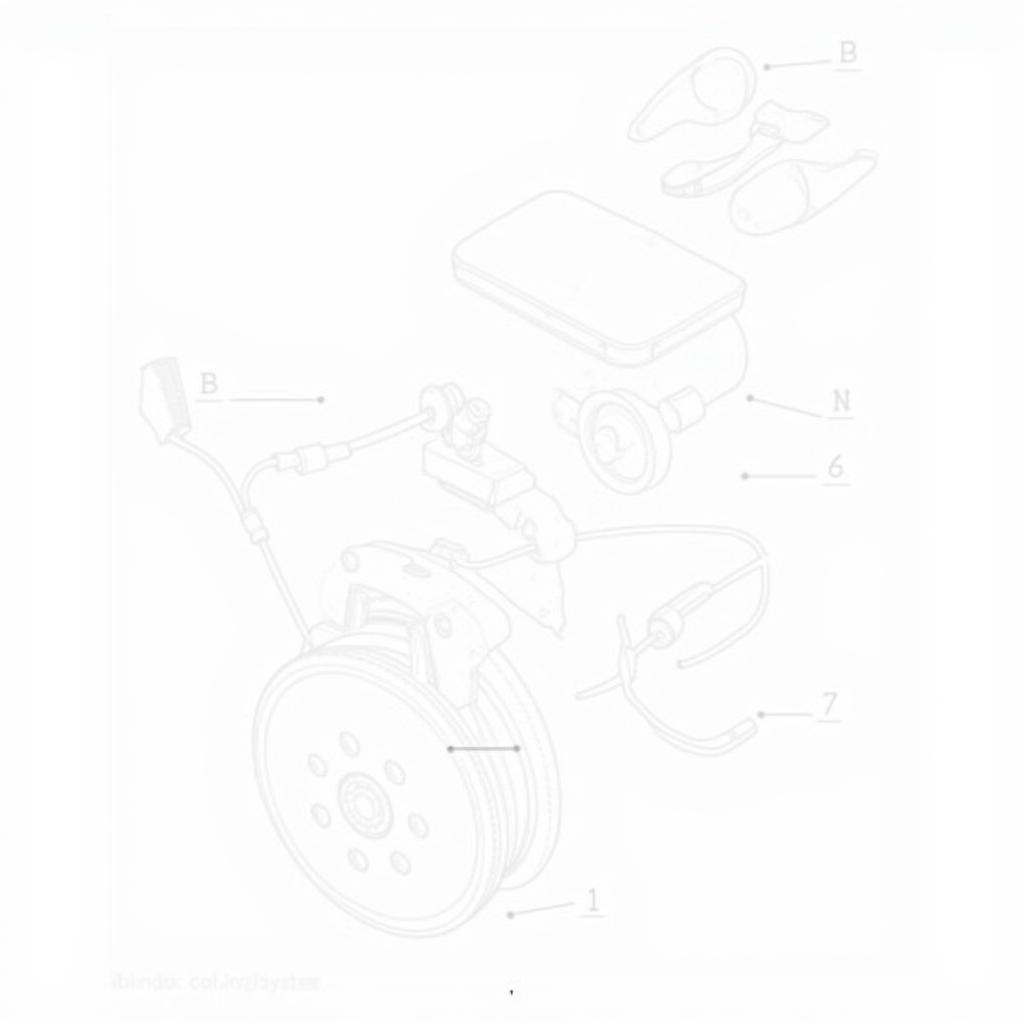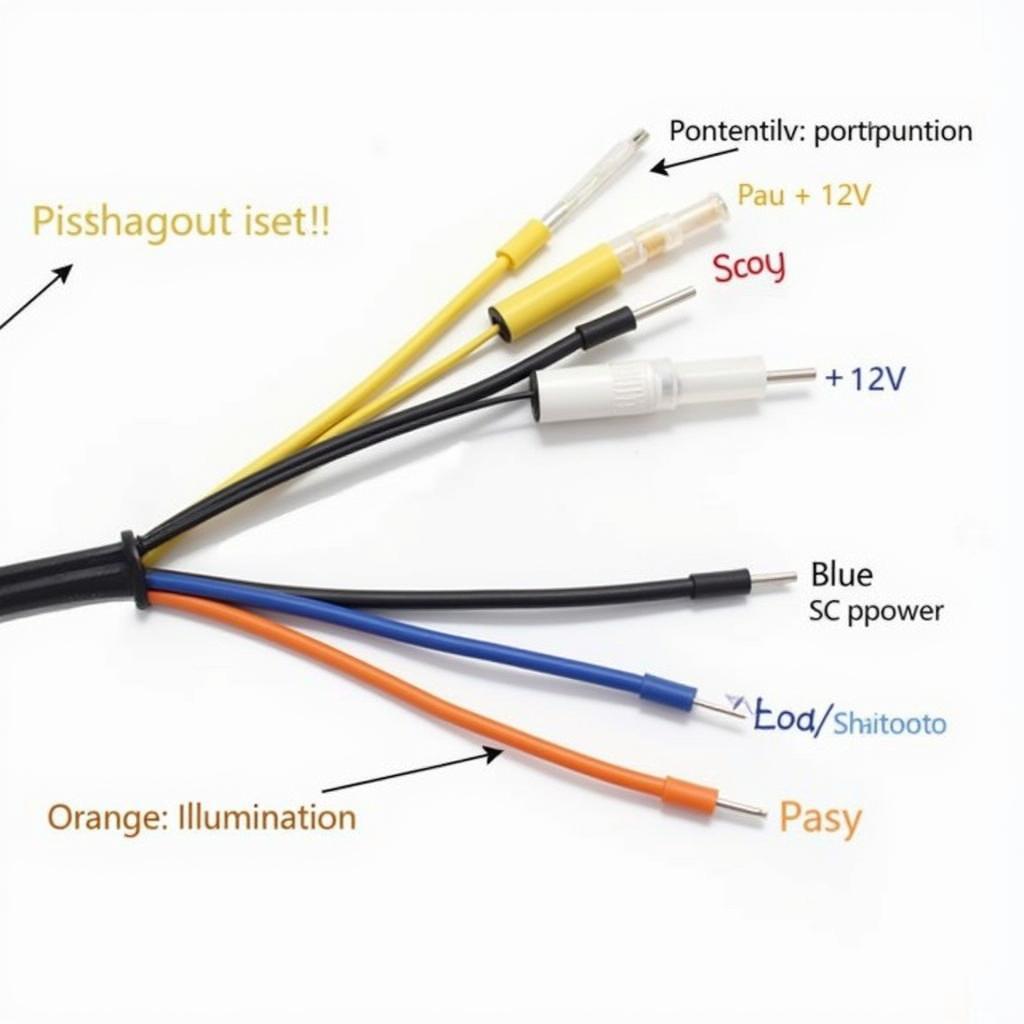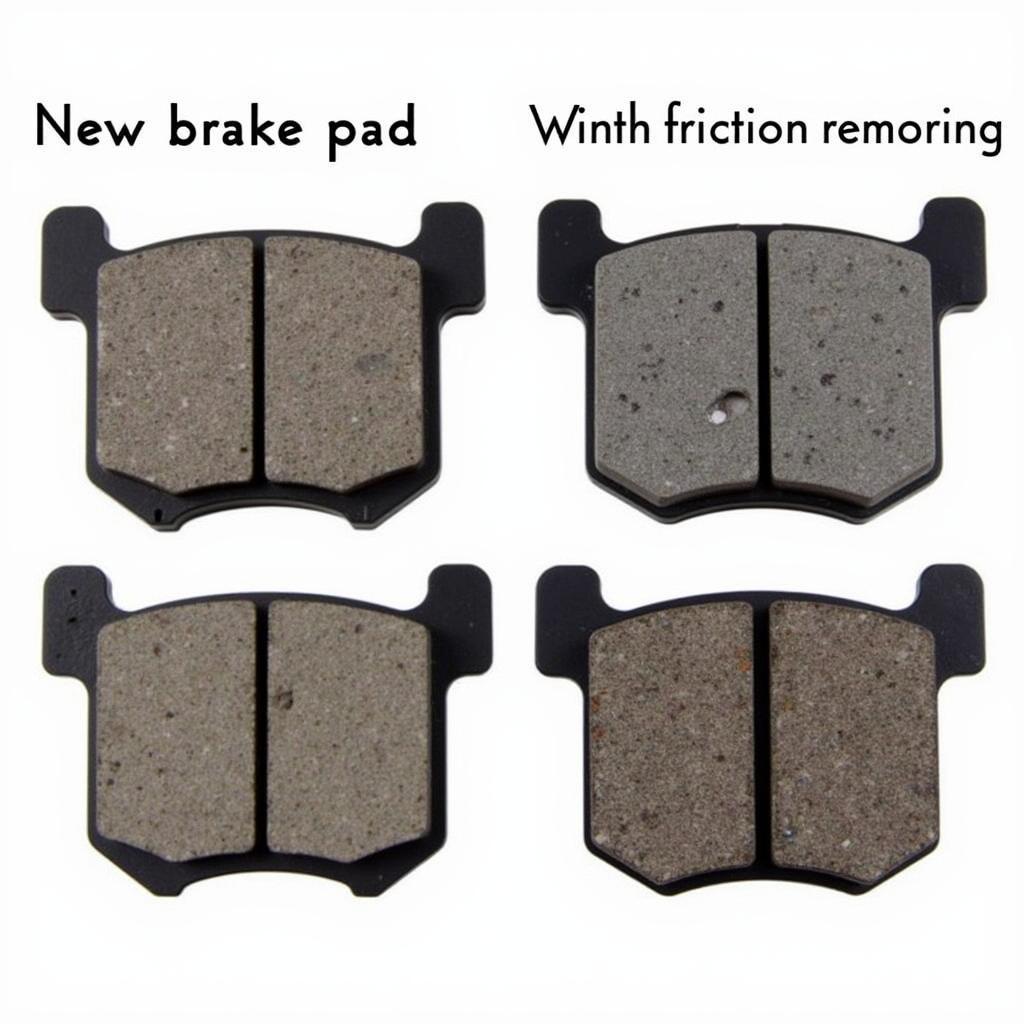Understanding your car’s brake system is crucial for safety. One common question drivers have is about the brake pad warning tab – specifically, whether it should be positioned at the top or bottom of the brake pad. Let’s dive into this seemingly small but important detail. If your brake warning light is on, figuring out this little detail could save you a lot of hassle down the line.
Similar to the issues faced by LR4 owners, as described in our article on LR4 brake pad warning, improper tab placement can lead to premature wear and unnecessary noise. Knowing the correct orientation is essential for optimal brake performance. You can learn more about brake warning lights in general on our page about the Skoda Fabia brake pad warning light.
Understanding the Brake Pad Warning Tab
The brake pad warning tab, a small metal piece attached to the brake pad, serves as an audible indicator of brake pad wear. When the brake pad material wears down to a certain level, the tab makes contact with the brake rotor, creating a high-pitched squealing sound. This sound alerts you that it’s time to replace your brake pads. Ignoring this warning can lead to more serious issues, such as damage to the rotors and calipers. For Mercedes W211 owners experiencing brake warning light issues, we have a dedicated article covering the brake warning light W211.
Top or Bottom: The Correct Placement
The correct placement of the brake pad warning tab depends on the specific vehicle and the position of the caliper. There is no universal rule, and assuming the wrong position can lead to ineffective warnings or even damage. Consulting your vehicle’s service manual is the best way to determine the correct placement for your car. This manual will provide specific instructions and diagrams to guide you. In some cases, like the Vauxhall Corsa, a brake fluid warning light might also indicate issues. Check our guide on Vauxhall Corsa brake fluid warning light for more details.
Determining Tab Placement for Your Vehicle
If you don’t have access to the service manual, you can usually determine the correct placement by observing the rotor’s direction of rotation and the caliper’s position. The tab should be positioned so that it makes contact with the rotor as the pad wears down. This ensures that the warning squeal occurs before the brake pad material is completely worn away.
What if the Warning Light Stays On After Changing Brake Pads?
Sometimes, even after replacing your brake pads, the warning light might stay on. This can be due to various reasons, including a faulty sensor, incorrect installation, or even a wiring issue. We’ve addressed this specific scenario in our article on what to do when the changed brake pads warning light still on.
Common Mistakes and Troubleshooting
A common mistake is installing the brake pads with the tab in the wrong position. This can prevent the tab from making contact with the rotor and triggering the warning. Another potential issue is a damaged or worn sensor. In some cases, the sensor might need to be reset or replaced after changing the brake pads.
 Brake Pad Warning System Components
Brake Pad Warning System Components
Conclusion
Determining whether the brake pad warning tab should be at the top or bottom is crucial for the proper functioning of your brake warning system. Always consult your vehicle’s service manual or a qualified mechanic to ensure the correct placement and avoid potential problems. Remember, a properly functioning brake system is essential for your safety and the longevity of your vehicle. Having the correct brake pad warning tab placement plays a crucial part in this.
FAQ
-
What does the brake pad warning tab do? It acts as an audible indicator of brake pad wear, alerting you when they need replacement.
-
Is there a universal placement for the brake pad warning tab? No, the placement depends on the specific vehicle and caliper position.
-
Where can I find information on the correct tab placement for my car? Consult your vehicle’s service manual.
-
What if I install the tab in the wrong position? You might not receive timely warnings about worn brake pads.
-
What if the warning light stays on after I change my brake pads? This could indicate a faulty sensor, incorrect installation, or a wiring issue.
-
Why is it important to have the brake pad warning tab installed correctly? It ensures the brake warning system functions properly, alerting you to potential safety hazards and preventing further damage to the braking system.
-
Can I drive with the brake pad warning light on? While you might be able to drive a short distance, it’s crucial to address the issue immediately to avoid potential damage and ensure safety.


